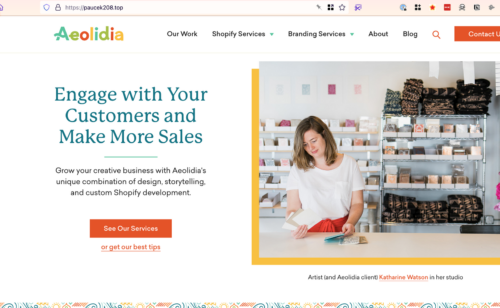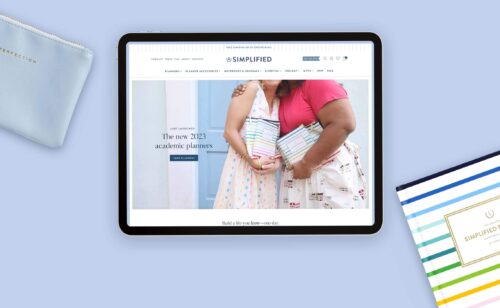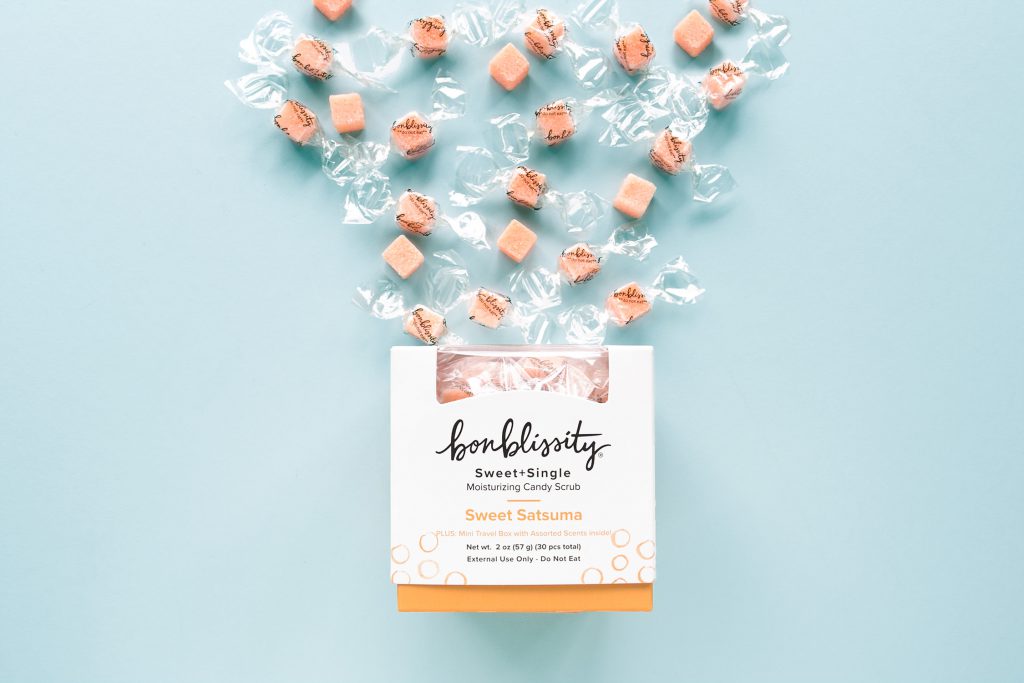
Your product pages are important tools to convince your customers to go from browsing to buying. A product page should, above all, help potential customers decide that they want the product. Photography and product description copywriting are both key for this, and both need to be top-notch and strategic. Let’s talk about the product page best practices you should be following to make more sales!
Start with your target customer in mind
If I could give one piece of advice about building a great product page, it would be this: start by knowing exactly who you are selling to.
Once you have a specific target customer in mind, you can make choices about photography and copywriting. You’ll know what features and benefits to point out, and what type of voice to use when talking about the product. Without a target customer, you end up trying to appeal to everyone, which makes your product appeal to no one.
Product photos
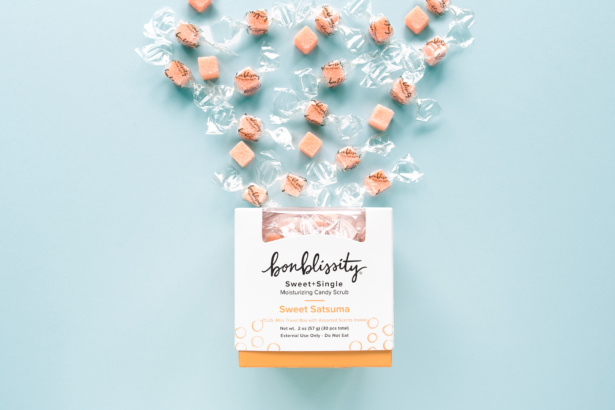
It should go without saying that the most important thing on your product page is the product photos, but I’m going to say it anyway. I’ve seen far too many online shops with too small, out-of-focus, horribly lit product photos over my many years. If there is only one thing you do to improve your product pages, having great product photos should be #1!
Your product photos speak so much louder than words, and they speak first! A potential customer is only going to be interested in reading the description if they’re first interested visually in what the item looks like. If you have nothing else on your product page, some clear, beautifully lit photos and an add-to-cart button will serve you far better than the most beautifully written and compelling description next to a crummy photo.
When you’re selling a tangible item of any sort, your photos are what help your potential customer begin to understand what it might look like, feel like, be like in their own home, or on their body. They can help give a sense of scale, texture, dimension, detail, color, light – all the juicy things that make us go “ooh” when we get to hold and touch and check out an item in person.
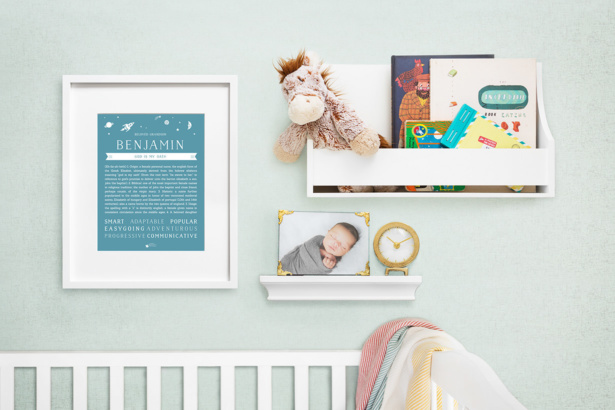
Your photos come closest to conveying what your item is like in real life, and that’s the best thing you can do as an online seller: give your customers as close to a real-life experience as you can.
So for photos that really reach out and speak to your customers, you’ll want to have (as these apply to your particular product):
- clear, fully in-focus shots – not that they can’t be artistic or with an out-of-focus background/dreamy look, if that’s what you’re after, but the product details need to be readable
- multiple photos, with different views/angles so people can see every single side
- BIG photos that people can zoom in on or see a close-up of to get a good sense of the details
- photos that deliver a sense of scale, ie: being shown on a model, or next to another object in a setting
- white background as well as “lifestyle” photos of your product in a real-life setting or being used so your customer can better imagine it in their own life
- photos in natural light, or with a lightbox or professionally lit – not lit by your iPhone flash
There are a lot of free tutorials for taking better photos all over the web, so google it up and practice practice practice. But if you find you just can’t take photos that speak to your brand and represent your products well enough, I believe this is one area where paying a professional, like our ecommerce photographer here at Aeolidia, or a service like Soona, is well worth it.
Product Description
The second part of your product page focus is, of course, the description! There are so many different ways to write your product description, from basic to downright poetic, but no matter how you write it, you’re going to want to consider both your product’s features and its benefits.
The product’s features are the factual details – the size, color, length, material, etc. This is essential information to include, of course, but far too often, it’s the only thing that people include in their product descriptions.
That dress you spent hours dreaming up, designing the pattern for, finding the perfect fabric for, cutting, sewing, finding a model to wear it, photographing and uploading to your site gets described in the end as “Wrap dress with a tie front. Cotton jersey. Eggplant. S-L.” That can be fine, it can work. Especially when paired with an awesome item image, it might be all you really need in order to sell it…
To go one step further with your descriptions, though, in order to really draw in and connect with that dream customer, you want to emphasize the product’s benefits over its features.
This is the value it brings to your customer, the story it inspires, the real reason why your dream customer might be attracted to it. Why is it special or different? What can it DO for your customer? How will it make them FEEL? These are the details that can make that add to cart button much more appealing to someone. Here’s a more effective product description example:
“This wrap dress was inspired by wanting something easy and flattering to wear after I had my baby. It’s simple enough for everyday and can be dressed up with your favorite jewelry for date night, in a breathable stretchy cotton jersey that’s so soft you won’t want to take it off. The wrap design and easy fabric make it super flattering for every body type to help you look as beautiful as you are on the inside.”
Remember to emphasize the benefits of what you offer, find those points of emotional connection, and your descriptions will be much more compelling and effective.
We often see entrepreneurs trying to do everything themselves, even if they aren’t great photographers or copywriters. Outsourcing these jobs is a great way to take a product page from medium to top quality, and professional services should pay for themselves with increased sales.
For example, our ecommerce copywriter, Natalia Sylvester, was enlisted to craft the copy for Little Truths Studio’s home page, about page, and product pages, and our client Lori Roberts said,
“If I consider how much wasted time and money I spent trying to do it myself, I would have saved money in the end had I just made the investment two years ago. It was a great experience.”
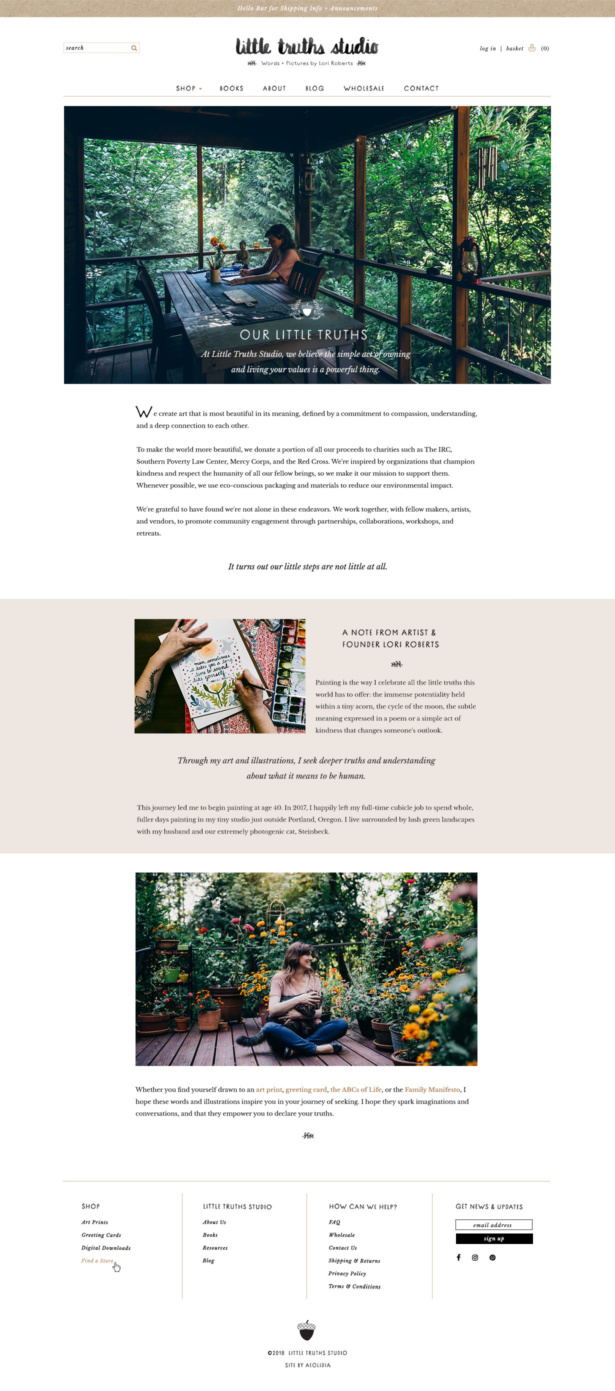
Another example of excellent product description copywriting is what Natalia came up with for our client, Pam Powers. She says,
“We decided to structure her product descriptions a little differently than most, leading with the product specs first, because her audience is knitters who quickly want to get the technical details of a pattern, and then as you scroll down and click to expand, you see more descriptive/narrative copy, with the goal to help the customer begin to imagine knitting and wearing this item. The strength of this description is that it also very quickly up-sells by recommending a specific yarn & linking to it, encouraging the customer to keep shopping and exploring.”
Here’s another example of a good product page from the Pam Powers Knits website. As Natalia points out,
“It’s a beautiful, complex-looking pattern, which is part of its appeal, but the description quickly puts customers’ concerns that it’d be too hard at ease by demystifying it a bit, and encouraging them to try their hand at it.”
When putting together content for a product page, you want to make sure that any questions a prospective customer may have are answered on the page without them needing to do any further research. If they get confused about the size of your product, the materials it’s made of, how to clean it, or anything like that, they may give up on it. We also like to infuse a bit of storytelling into the work we do for websites. Copywriting that can help your customer imagine your products in their life can be powerful.
Other features to consider for your product pages:
Reviews and testimonials
Getting product reviews on Shopify is essential to ecommerce success. These are an awesome way to reach right out to your customers, by letting other happy customers do the talking for you! Their words speak much louder to potential customers than yours can about what you have to offer, and can be one of the main deciding factors that help people click that add to cart button. Consider including a quote from a happy customer, or pic of them using the item, on the product page itself.
Cross-promotion and up-selling
It not only gets people looking around your site more, but it’s engaging for people to see recommendations for other products in your shop that they may like based on what they’re looking at now. It makes the shopping experience feel more personalized towards the customer and can lead them down a bunny trail into your shop and products they might not have otherwise discovered. Consider a goes well with/you may also like/customers also bought sort of feature for your product page to help guide your customer based on their interests. It helps if these aren’t random, but curated.
Other product-specific things to consider….
- Selling clothing or accessories? It’d be helpful to include a link to your sizing chart!
- Does your item require special care the customer needs to know about upfront?
- Are you making limited or one-of-a-kind items? Knowing that there’s only one or few can be a great motivation for someone to buy it now!
- Are there customizable options? Make choosing and executing an order as EASY AS POSSIBLE for the customer.
If you make it incredibly easy for your customer to learn everything they need to know before they buy, then BUY is exactly what they’ll do!
And happy buyers are the best form of marketing because they tell their friends, they share on social media, and they buy AGAIN. Yes! That’s what we want.
Want more tips for writing great product descriptions?
Need even more ideas for how to write great product descriptions that will improve your sales? Here’s a link roundup from some of my favorite small business resources that should get you off to a great start with a challenging task.
- 9 Simple Ways to Write Product Descriptions that Sell – on the Shopify blog
- 5 Tips for Connecting with Your Customers and Making More Sales – on the Shopify blog
- Now featuring benefits! on Copyblogger
- E-Commerce Copywriting: The Guide to Selling More on Smashing Magazine
- 4 Magic Words That Increase Sales on the Shopify blog
We’ve also written other articles about how to make your homepage appeal to customers and how to write your about page. Check those out too, and go forth and make sure your site’s content is speaking to your dream customer, loud and clear!
Ready to make your online shop make more sales?
There are so many things on a small business owner’s plate, and we know that you can’t be expected to do it all yourself! That’s why Aeolidia has a copywriter on staff, if you would like it taken off of your hands completely. We can create all your product descriptions for you, or we’re able to write a handful of representative descriptions (maybe one from each of your shop categories?) to give you a feel for what works and how to model the rest of your descriptions when writing them yourself.
We are able to provide ecommerce copywriting services to our clients as part of a website project, or as a standalone project, so please do get in touch if you’d like help with your product descriptions or anything else.
Browse Posts
Newsletter Sign Up
We write a new email each week to help you grow your business.
Related Posts
Let's take your online shop to the next level
The Shopify websites we design have a reputation for substantial improvements to ecommerce conversion rates and online sales. Let's talk!
 Grab my guide to the 10 main ways to grow traffic and optimize to boost sales.
Grab my guide to the 10 main ways to grow traffic and optimize to boost sales.
